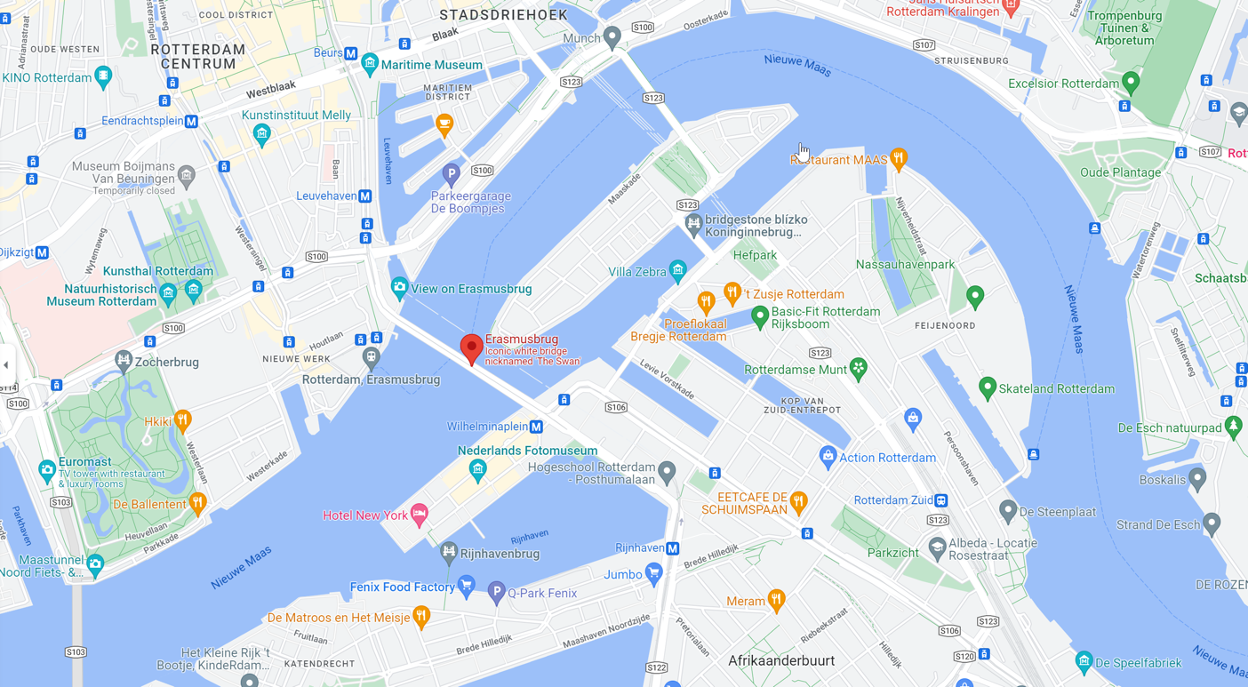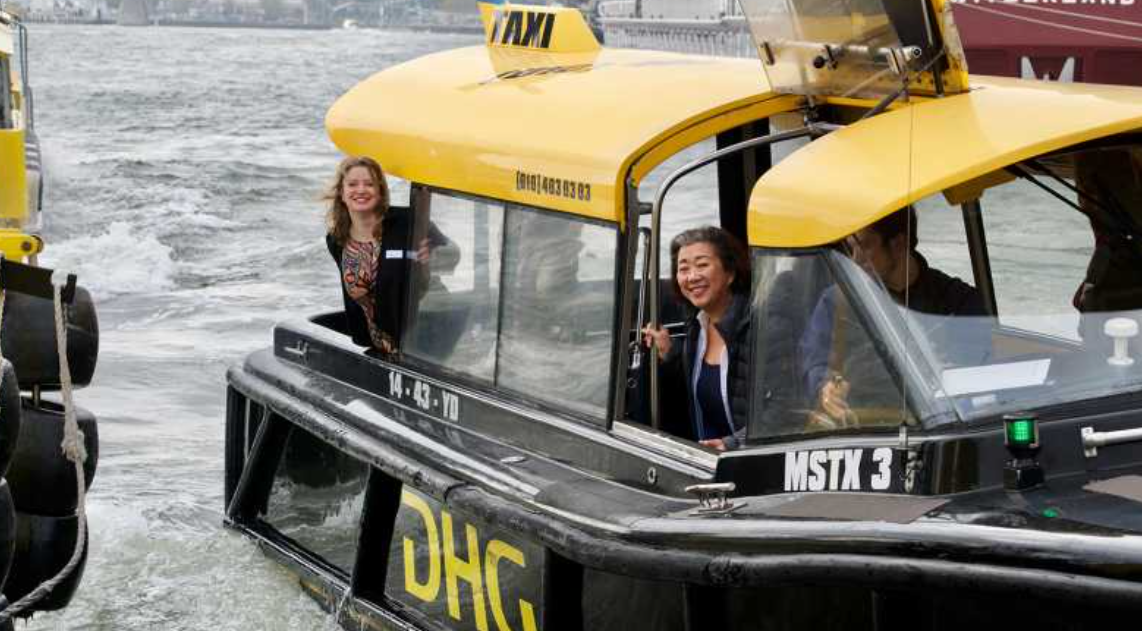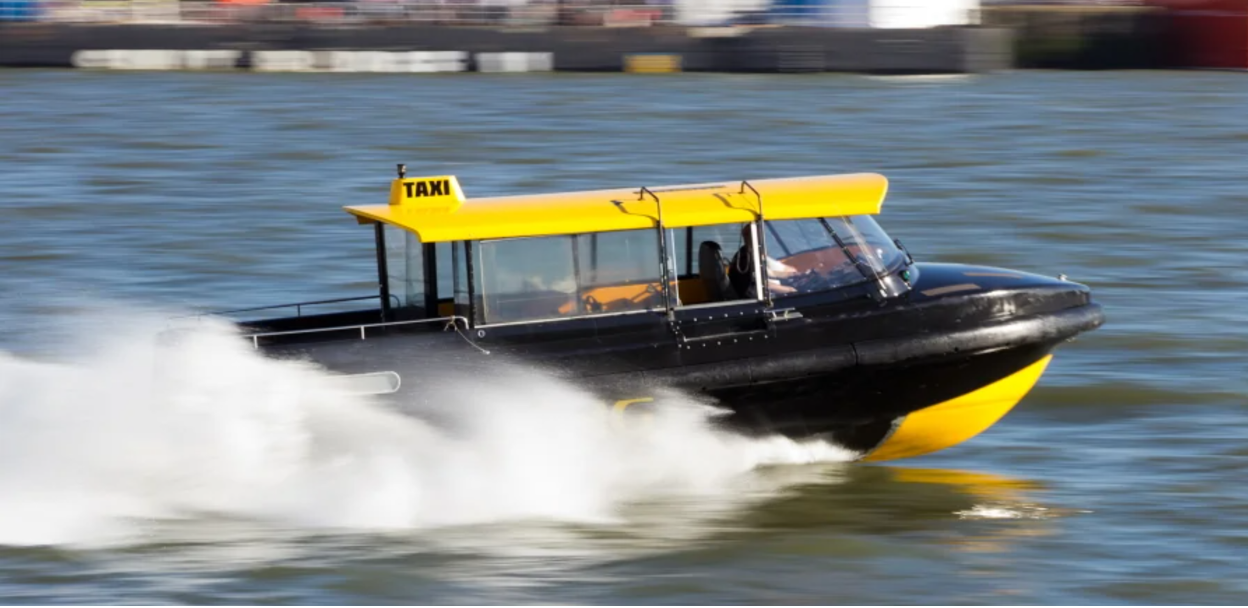6 Escape Death from Capsized Boat

A Teaching Moment
A stationary observation webcam captured a water taxi speeding on an oblique track directly for the bow of the excursion vessel. The taxi was slightly ahead of the excursion boat and because it was going relatively fast, we must assume that the captain’s eyes were focused forward. Further, the helm was to starboard, making it more difficult to see to port and slightly behind.
The Rotterdam Netherlands website has this to say about the water taxis:
“Skippers of the Schippers Centrale Rotterdam operate the water taxis. Since the Nieuwe Maas is one of the busiest rivers in the world, all skippers are fully qualified to sail on the Nieuwe Maas. The skippers usually work part-time at Watertaxi Rotterdam and also work on barges, patrol vessels or harbour tugs.”

Since the river is so busy in Rotterdam, there may be special local rules. No matter what they may be, they will not contravene Rule 5.
The International Rules of the Road, Rule 5, requires that —
“Every vessel shall at all times maintain a proper look-out by sight and hearing as well as by all available means appropriate in the prevailing circumstances and conditions so as to make a full appraisal of the situation and of the risk of collision.”
In this case, we think Rule 6 has particular application —
The International Rules of the Road, Rule 6, requires that —
“Every vessel shall at all times proceed at a safe speed so that she can take proper and effective action to avoid collision and be stopped within a distance appropriate to the prevailing circumstances and conditions. In determining a safe speed the following factors shall be among those taken into account:
- By all vessels:
- The state of visibility;
- The traffic density including concentrations of fishing vessels or any other vessels;
- The maneuverability of the vessel with special reference to stopping distance and turning ability in the prevailing conditions…”

Again, we quote from the Rotterdam tourist website —
“The taxi boats will take you from A to B within the Rotterdam harbour area at about 50 kilometres per hour (31 mph) and are part of a unique transport network in Europe. The watertaxi area goes from Spijkenisse to the windmills of Kinderdijk. Travelling by water taxi is faster than by road.”
Take-Away #1. Local culture, and perhaps custom, was as responsible for this accident as anything else, in our opinion. Everyone in Rotterdam seems to have been proud of their fast water taxis. It seems that they were expected to go zipping around by everyone.
When the video from the bridge started rolling, a police rescue had just arrived at the scene. We have no way of knowing how long the taxi had been upside down at that point. The rescue police stood on the deck looking at the turtled taxi for 30 seconds, before another water taxi roared into the camera view.
Another long 60 seconds passed with no action. Several boats came quickly to the rescue, but the operators and rescue did not move immediately into action.
Take-Away #2. The Netherlands is a seafaring country with a strong tradition of seamanship. We suspect there have been no shortage of accidents on the Maas River and the marine rescue police on the scene had been very well trained. But, they had not been told what to do when a water taxi turns turtle and people are trapped beneath. It is simply impossible to train for all the emergencies that could occur. They are all probably a bit different from the textbook rescue scenarios.

At 1:32 in the video from the bridge, the rescue police motion to a taxi to go to their boat’s stern. A plan has been hatched, and given the complexity of the situation, in retrospect, that seems to have happened pretty fast.
The first water taxi to approach the rescue boat seems to have had a hard time maneuvering and backed away. A second one sped into place and was obviously helmed with more skill. Immediately, it laid up alongside the rescue boat and police jumped aboard.
Take-Away #3. Any plan is better than no plan. Once the police had devised a plan, they and the rescue water taxi acted with alacrity. In what appears to be under 4 minutes from the time the rescue boat arrived, a line had been affixed to the skeg and was tied to the taxi.
Pulling the line perpendicular to the capsized vessel rolled it upright, but it was still submerged by the bow. Then, the rescue taxi pulled the stricken vessel backwards as fast as its single diesel engine would allow. This maneuver kept the stern above water and bought time for the six passengers to make their way to the stern. This was possibly the most remarkable aspect of the rescue.

Take-Away #4. With the exception of the young child who was quickly and easily pulled into the lead water taxi, this video reminds us of a major danger with all boats when people are in the water. In rescue situations, it is usually difficult to get adults back aboard from the water.
ABYC standards require that all powerboats built in the U.S. have emergency steps or ladders so someone in the water can theoretically reboard. We say “theoretically” because after an ordeal such as the one we saw in this video, a person would probably be drained of strength and need help.
Clearly, in this case, even though they were in a relatively calm river, the rescue personnel chose not to lead the adults in the water to the stern platform of the water taxis. Further, the rescue boats seemed not to have had a device to more easily get people out of the water, other than just brute strength.
We commend the Rotterdam police rescue team for saving the six individuals in less than 10 minutes from the time they arrived on the scene, from what at first seemed like an impossible mission.
Take-Away #5. Never – ever – give up.